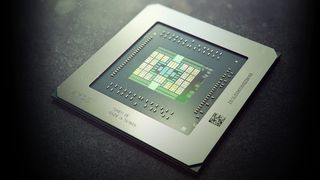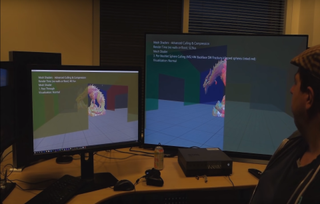Xbox Series X dev teases juicy AMD RDNA 2 GPU performance
Mesh Shaders are the future, and right now that future looks very bright for AMD.

A recent video from Martin Fuller over at the DirectX Developer Day goes into great depth about what improvements Mesh Shaders are going to make to the whole GPU rendering pipeline. This is a technical video aimed at developers, and really isn't intended for us gamers, but there are enough interesting facts about the graphics heart of the Xbox Series X, AMD's RDNA 2, in there to make it well worth checking out.
First a little background: One of the biggest advantages to moving over to Mesh Shaders over the traditional pipeline is that you can cull unseen vertices much sooner. That is, if you know an object, or part of an object, is obscured, then you don't need to use up vital resources manipulating and shading it. Whereas in the current pipeline culling basically happens right at the very end.
You might not think that this makes much of a difference, but in the above video (via Sweclockers), at the 24:50 mark, you'll see a wonderfully detailed dragon half obscured by a wall. Mesh Shading means that the triangles that are obscured by the wall are culled much sooner, which takes the render time down from 102 microseconds using traditional rendering to 53 microseconds using Mesh Shading and lots of culling. Quite the improvement. Yay for mesh shading then.

Where things get interesting is the PC that Martin Fuller is using for comparison to the Xbox Series X. Inside that rig is the current creme-de-la-creme of graphics hardware, the $1,200 Nvidia GeForce RTX 2080 Ti. Now it isn't a straight comparison, as the PC is hooked up to a 1440p screen, while the Xbox Series X is plugged in to a 4K display. But still the fact that the Nvidia card is seen rendering the same scene at the lower resolution in 72 microseconds initially, dropping down to 32 microseconds with the best culling algorithm, indicates that the Xbox Series X is packing comparable power when it comes to Mesh Shader might.
Before we all get too carried away, it's worth noting that Mesh Shaders aren't really in use right now, and so Nvidia hasn't optimized those paths yet, whereas this is obviously a key technology for the new Xbox and a lot of work is going into get the most from that hardware. This also isn't a straight apples for apples comparison either, as the Xbox Series X is using 256 SIMD waves, while the GeForce RTX 2080 Ti is using just 32 SIMD waves. Still, it looks like we may finally have a decent fight on our hands when RDNA 2 hits the PC later this year.
The biggest gaming news, reviews and hardware deals
Keep up to date with the most important stories and the best deals, as picked by the PC Gamer team.
Alan has been writing about PC tech since before 3D graphics cards existed, and still vividly recalls having to fight with MS-DOS just to get games to load. He fondly remembers the killer combo of a Matrox Millenium and 3dfx Voodoo, and seeing Lara Croft in 3D for the first time. He's very glad hardware has advanced as much as it has though, and is particularly happy when putting the latest M.2 NVMe SSDs, AMD processors, and laptops through their paces. He has a long-lasting Magic: The Gathering obsession but limits this to MTG Arena these days.
Most Popular






